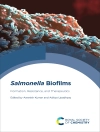This volume is composed of chapters that review important fundamental aspects of HCV biology and disease pathogenesis including, for example, the discovery and identification of the HCV genome, early virus-cell interactions including identification of various cellular receptors, HCV gene expression studied using the HCV replicon system, identification and characterization of HCV structural- and non-structural HCV proteins, HCV replication in cultured cells, and host factors involved in viral replication. This volume also contains chapters dealing with immunity to HCV infection and pathogenesis. This is particularly important in understanding hepatitis C because HCV infection alone is not cell lytic. Mechanisms underlying the persistent nature of HCV infection are also discussed in these chapters. Many of the authors published articles that were listed among the “top 10 papers” published in the 24 years since HCV was discovered in 1989. Their citations are above 1, 000 (Web of Science). The authors describe the background and significance of their contributions to the field in the context of findings from other research groups.
Innehållsförteckning
Part I. Hepatitis C Virus.- 1. Towards the Control of Hepatitis C (Michael Houghton).- 2. Hepatitis C Virus Genotypes and Their Evolution (Tadasu Shin-I, Masaya Sugiyama, Masashi Mizokami).- 3. The Structure of HCV (Joseph Marcotrigiano and Maria Teresa Catanese).- Part II. The Viral Life Cycle.- 4. Cell Culture Systems for Propagation of HCV.- 5. HCV Receptors and Virus Entry (Rajiv G. Tawar, Catherine Schuster, and Thomas F. Baumert).- 6. Structural Proteins of HCV and Biological Functions (Kohji Moriishi and Yoshiharu Matsuura).- 7. Role of Nonstructural Proteins in HCV Replication (Tetsuro Suzuki and Ryosuke Suzuki).- 8. The HCV Replicase Complex and Viral RNA Synthesis (Inés Romero Brey and Volker Lohmann).- 9. Host factors and the HCV lifecycle (Glenn Randall).- 10. Lipid Peroxidation and Hepatitis C Virus Replication (Daisuke Yamane and Stanley M. Lemon).- 11. Lipid and Lipoprotein Components Play Important Roles in HCV Egress and Infectivity (Takayuki Hishiki, Yuko Shimizu, Saneyuki Ujino, Hironori Nishitsuji, and Kunitada Shimotohno).- Part III. Immune Recognition and Pathogenesis.- 12. New Animal Models for Hepatitis C (Alex Ploss).- 13. Innate Immune Recognition of Hepatitis C Virus (Kui Li).- 14. B Cell Responses and Control of HCV Infection (Zhen-Yong Keck, Thomas R. Fuerst, Roy A. Mariuzza, and Steven K.H. Foung).
Om författaren
Tatsuo Miyamura M.D. Ph D. (Jikei University, Japan)
Stanley M.Lemon M.D. Ph D.(The University of North Carolina, USA)
Christopher M. Walker Ph D. (The Research Institute at Nationwide Children’s Hospital, USA)
Takaji Wakita M.D. Ph D. (National Institute of Infectious Diseases, Japan)











